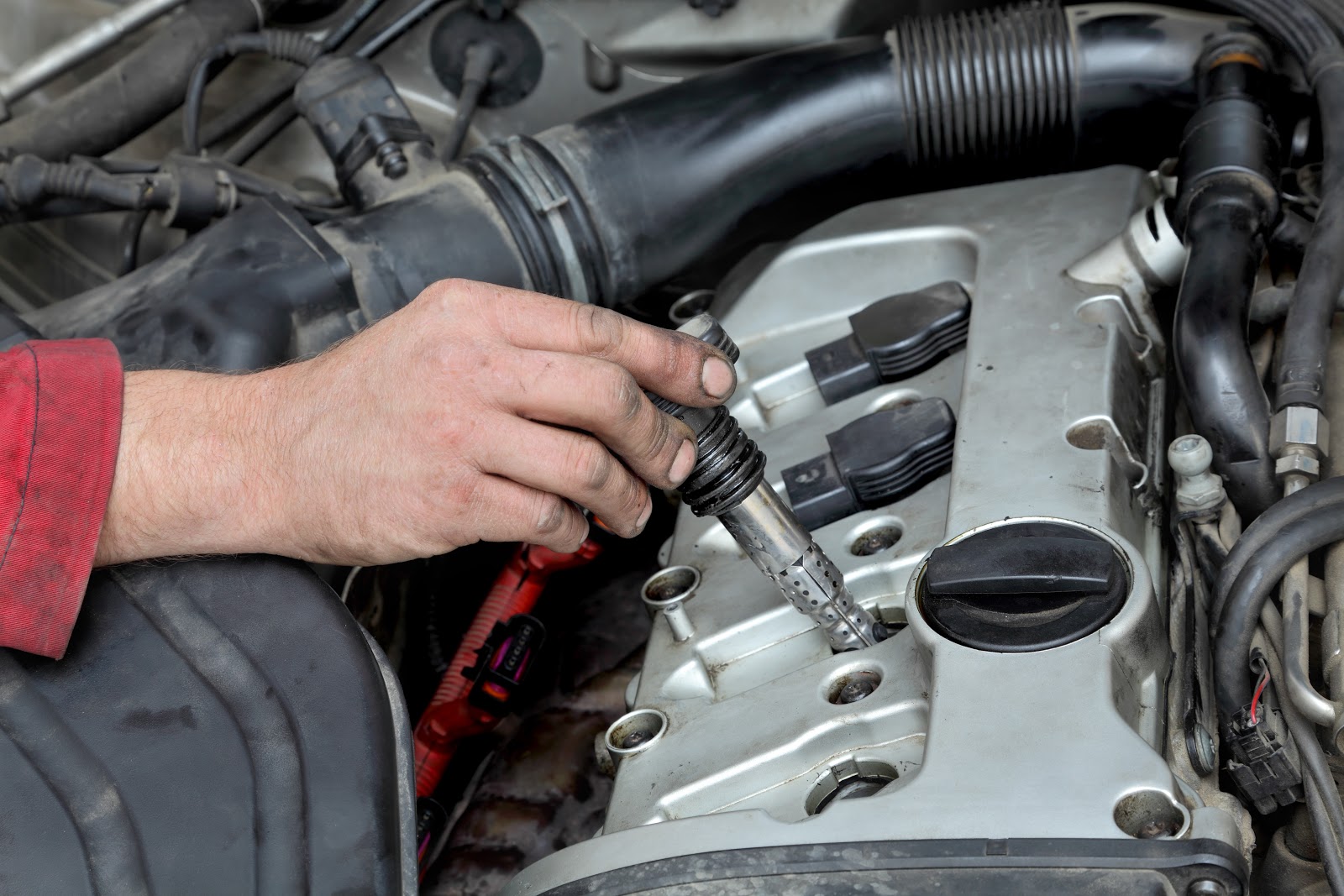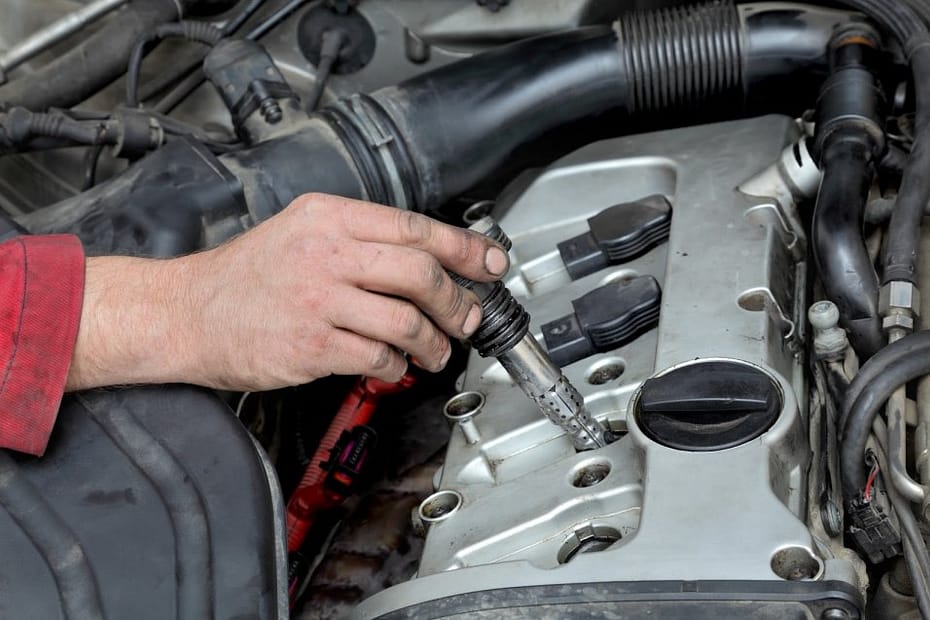If your car is not starting or experiencing misfires, there is a high chance that the ignition coil is bad. Ignition coils play a crucial role in the functioning of a car’s ignition system.
They are responsible for converting the battery’s low-voltage power into high-voltage energy, which is required to ignite the fuel and start the engine. However, over time and due to various factors, ignition coils can wear out or become damaged, leading to issues with starting the vehicle or engine misfires.
Identifying a faulty ignition coil is essential to ensure the smooth operation of your car. This article provides insights into how to know if the ignition coil is bad, offering valuable information to diagnose and resolve potential problems with your vehicle’s ignition system.

Credit: carorbis.com
Common Signs Of A Bad Ignition Coil
The ignition coil is a crucial component in your vehicle’s ignition system. It is responsible for transforming the battery’s low voltage into the high voltage needed to create sparks in the spark plugs. Over time, the ignition coil can wear out or get damaged, leading to problems in your vehicle’s performance.
Engine Misfires
One common sign of a bad ignition coil is engine misfires. Misfires occur when the spark plugs fail to ignite the fuel-air mixture at the right time. This can cause a rough running engine, noticeable power loss, and in some cases, the engine may even stall. If you experience frequent misfires, it is likely that your ignition coil needs to be replaced.
Hard Starting Or No Starting
Another common sign of a bad ignition coil is difficulty in starting your vehicle or no starting at all. When the ignition coil fails, it can no longer generate the necessary voltage to create a spark. As a result, you may notice that your engine cranks for an extended period before starting, or in some cases, the engine won’t start at all. If you’re experiencing this issue, it is highly likely that your ignition coil needs to be checked and possibly replaced.
If you suspect that your ignition coil is bad, it is important to address the issue as soon as possible. Ignoring a faulty ignition coil can lead to further damage to other components of the ignition system, such as the spark plugs and even the catalytic converter.
In conclusion, being aware of the common signs of a bad ignition coil can save you from potential breakdowns and costly repairs. If you notice engine misfires, or experience difficulties starting your vehicle, it is advisable to get your ignition coil checked by a qualified mechanic. Remember, a healthy ignition coil is essential for optimal engine performance and smooth running of your vehicle.

Credit: www.amazon.com
Diagnosing A Faulty Ignition Coil
A faulty ignition coil can lead to a variety of car problems, from misfires to stalling. To avoid being stranded on the side of the road, it’s important to quickly identify if your ignition coil is bad. In this article, we will discuss three effective methods to diagnose a faulty ignition coil: using a multimeter, inspecting for physical damage, and performing a spark test.
Using A Multimeter
The first step in diagnosing a faulty ignition coil is to use a multimeter. A multimeter measures the resistance and voltage of electrical circuits, allowing you to determine if the coil is functioning properly. To use a multimeter:
- Start by setting the multimeter to the resistance or ohms setting.
- Disconnect the ignition coil from the spark plug.
- Connect the multimeter leads to the two terminals of the ignition coil.
- Read the resistance value on the multimeter display. A healthy ignition coil should have a resistance in the range specified by the manufacturer.
- If the coil’s resistance is outside the recommended range, it is likely faulty and should be replaced.
Inspecting For Physical Damage
Another effective way to diagnose a faulty ignition coil is to inspect it for physical damage. Physical damage can include cracks, corrosion, or carbon tracking on the coil’s casing or terminals. To inspect for physical damage:
- Visually examine the ignition coil for any cracks or signs of physical wear.
- Check the coil’s terminals for corrosion or carbon tracking. These can disrupt the electrical connection and cause coil failure.
- If you notice any physical damage, it is recommended to replace the ignition coil as soon as possible.
Performing A Spark Test
A spark test is a simple yet effective way to determine if the ignition coil is generating the necessary voltage to ignite the fuel-air mixture in the engine. To perform a spark test:
- Disconnect the ignition coil from the spark plug.
- Using insulated pliers, hold the spark plug wire a few inches away from a metal surface on the engine.
- Crank the engine and observe if a strong, blue spark jumps across the gap.
- If there is no spark or the spark is weak and intermittent, the ignition coil may be faulty and should be replaced.
Diagnosing a faulty ignition coil is crucial in maintaining the performance and reliability of your car. By using a multimeter, inspecting for physical damage, and performing a spark test, you can accurately identify if your ignition coil needs replacement. Remember to consult your vehicle’s manual or seek professional help for specific diagnostic instructions related to your car’s make and model.
Replacing An Ignition Coil
When it comes to replacing an ignition coil, it’s important to know how to identify the signs of a bad one. Once you’ve determined that the ignition coil needs replacing, you can follow these steps to ensure a smooth and successful process.
Locating The Ignition Coil
To replace an ignition coil, you must first identify its location in your vehicle. The ignition coil can typically be found near the engine, attached to the ignition system, and is usually connected to the spark plugs. There are various types of ignition systems, such as distributor and distributorless. It’s essential to consult your vehicle’s manual or seek professional guidance to accurately locate the ignition coil.
Safety Precautions
Before replacing the ignition coil, it’s crucial to take necessary safety precautions to protect yourself and your vehicle. Here are some safety measures to consider:
- Turn off the engine: Ensure the engine is switched off before beginning any work on the ignition coil to prevent any accidents or injuries.
- Wear protective gear: Utilize gloves and safety glasses to shield yourself from any potential harm caused by electrical equipment or debris.
- Disconnect the battery: Prior to commencing the replacement, disconnect the battery to minimize the risk of electric shock.
- Follow manufacturer’s guidelines: Adhere to the specific safety guidelines provided by your vehicle’s manufacturer to ensure a secure replacement process.
Preventive Maintenance Tips
Suspicion of a faulty ignition coil is indicated by symptoms like rough idling, sluggish acceleration, and decreased fuel efficiency. If the engine misfires or shows signs of difficulty starting, it could mean the ignition coil is malfunctioning, requiring prompt diagnosis and replacement as part of preventive maintenance.
Regular Inspection
Check ignition coil regularly for signs of wear or damage. Look out for cracks, corrosion, or physical defects.
Replacing At Manufacturers Recommended Intervals
Follow the manufacturer’s guidelines for timing of ignition coil replacement. Ensure to switch out the coil accordingly.
Seeking Professional Help
Seeking Professional Help:
When To Consult A Mechanic
Notice persistent issues or more significant car problems.
Diagnostic Tools Used By Professionals
Professionals use OBD scanners for accurate diagnosis.

Credit: www.ymfcarparts.co.uk
Frequently Asked Questions Of How To Know If Ignition Coil Is Bad
How Do You Check For A Bad Ignition Coil?
To check for a bad ignition coil, follow these steps: 1. Start the engine and let it idle. 2. Use insulated pliers to detach one spark plug wire at a time. 3. Listen for any changes in engine noise or rpm.
4. If there is no change when a particular wire is removed, then that ignition coil is likely faulty. 5. Repeat the process for all spark plug wires to identify the bad ignition coil.
What Are The Symptoms Of A Failing Ignition Coil?
Symptoms of a failing ignition coil include rough idling, engine misfires, decreased fuel efficiency, difficulty starting the vehicle, and a decrease in power. If you experience any of these signs, it’s advisable to have the ignition coil checked and replaced if necessary.
How Do I Know When My Ignition Coil Needs Replacing?
You may need to replace the ignition coil if you experience issues such as rough idling, misfiring, or a significant drop in fuel efficiency. Additionally, a failing ignition coil can cause problems starting the vehicle or the Check Engine light to illuminate.
Regular maintenance can help identify these issues early.
Can I Drive With Bad Ignition Coil?
Driving with a bad ignition coil is not recommended as it can cause engine misfires, poor fuel efficiency, and potential damage to the catalytic converter. It’s best to replace the faulty ignition coil promptly to ensure smooth and safe driving.
Conclusion
Checking the ignition coil is crucial for your vehicle’s performance. With the help of simple diagnostic techniques, you can identify potential issues and ensure the smooth operation of your engine. Understanding the signs of a bad ignition coil empowers you to address problems promptly, thus preventing further damage to your vehicle.
Proper maintenance and timely replacements can extend the life of your vehicle.
